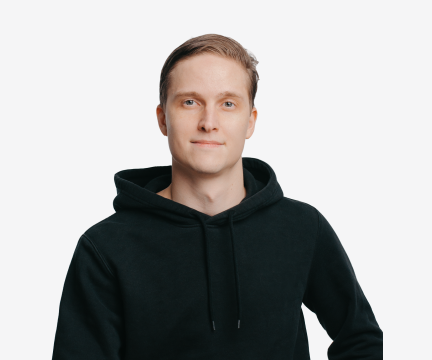What is GEOINT? Why does it concern ordinary people? Can you pinpoint an exact location from the shadow of a building or an airplane? How easy is it to be identified from a road sign in a photo?
Hello, this is the Kotelov. And we have some unusual guests today – Schwartz and Castello. These guys are involved in cyber reconnaissance.
Today, we’ll discuss who needs to know the exact location and why, how to identify objects from photos, and where to learn these skills.
What is GEOINT?
GEOINT stands for Geospatial Intelligence, which is open-source geospatial reconnaissance that allows for the determination of a person’s or object’s location from photos.
Intelligence agencies have always been interested not only in what their competitors are up to but also where they are. In the early days of GEOINT, agents used photos acquired from overseas for their work. Later, satellite imagery became available
Who needs and why accurate location data?
Determining the location of an object or a person can be useful for:
- Commercial companies: They use it to find the whereabouts of offices, servers, competitor logistics, and more.
- Reporters: They conduct their own journalistic investigations.
- Ordinary people: They use it to distinguish between credible and fake information. For instance, when there’s news of an emergency in a certain region, GEOINT tools can help verify if the location is indeed accurate and if the photo is recent.”
Here’s another example: If someone’s expensive car is stolen, and the thieves demand a ransom for its return, they might send a photo as proof. A GEOINT specialist can determine the car’s location from the image. The car owner can then provide this information to law enforcement agencies.
- Fraudsters often plan to steal or destroy property. For example, in 2022, crypto farms in the Novosibirsk and Irkutsk regions were robbed. One of the reasons the criminals were traced was the high electricity consumption. The second reason was the transportation of equipment didn’t go unnoticed. All of this was possible to uncover, thanks to GEOINT tools.
GEOINT Tools
- Google and Yandex Maps: These tools help identify objects in photos and display them from various angles.
- Geolocation Estimation: This neural network can estimate where a photo or video was taken, down to the continent, country, or region.
- Instant Street View: This tool functions as an animated map, allowing users to understand the location of an object and what’s nearby.
- Google Earth: A computer program that displays a 3D image of Earth using satellite imagery.
- Dorks: This tool allows users to find more specific information compared to what is typically provided by Google or Yandex. For example, if you have a photo taken in Tyumen with house number 39, but the street name isn’t visible, you can set search parameters like ‘Tyumen *house 39’ to obtain images of house number 39 on all streets in the city.
How the Work with the Client Is Structured
Working with a client is typically divided into two stages: the preparatory stage and the main stage.
During the preparatory stage, a specialist first assesses the ethical aspects of the request: why it is necessary to determine a location, where the client’s media content comes from. If the information is unclear or incomplete, no one will proceed with the order. Additionally, it’s challenging to assist the client when dealing with low-quality photos or videos.
Only in the movies do they feed a small, blurry photo into the program and get all the details in return.
In reality, the search for an object’s location is a tedious and monotonous task handled by a team of 2-3 specialists.
During the preparatory stage, the specialist also clarifies the limitations of the request
- What specific data is needed: country, region, pinpoint on the map.
- Cost
At the main stage, the specialist isolates each element in the photo or video and analyzes it meticulously. Every detail matters, and even the most inconspicuous detail can be the key to solving the puzzle. A good example of this is the Shia LaBeouf case, which we discussed in the podcast.
Valuable information sources include:
- Mountains: They are easily visible on satellite images and maps, and they remain unchanged in appearance and location. Therefore, landscape viewing services can help identify which mountain is in the photo.
- Shadows: Working with shadows can be complex. It requires knowledge of the object’s height that casts the shadow. Only then can you determine the time and day the photo was taken.
- Stars: Stars are at specific distances from each other. So, if you know the distance between stars, you can compare it with the distance in the source image.
- People: Another crucial detail. For example, clothing can indicate where a person lives, whether in a village or a city. GEOINT specialists pay attention to race and nationality.
- Aircraft: Tracking services can help identify the type of aircraft in the photo.
The Future of GEOINT
Artificial intelligence, which is currently advancing by leaps and bounds, has not bypassed GEOINT. Who and why came up with a neural network that generates satellite images? Will AI applications help streamline the labor-intensive process of gathering geospatial data, or will they, on the contrary, take jobs away from cyber intelligence specialists? Listen to this in our podcast.
If you’re interested in topics that are not widely discussed and special guests who don’t often appear in mainstream media, subscribe to our Telegram channel. There, we post announcements of new podcasts with cool guests and unconventional topics.
By the way, check out how geointelligence experts found the coordinates of our office in just a couple of hours from a photo – you can see it here.
Please write in the comments what you’re listening to and what you recommend to others
